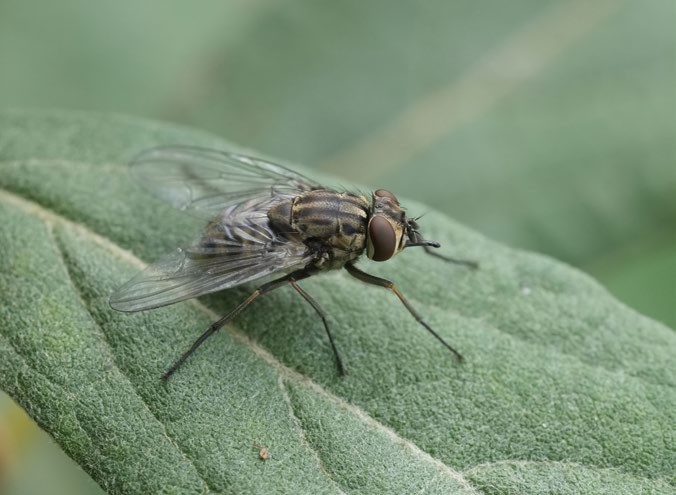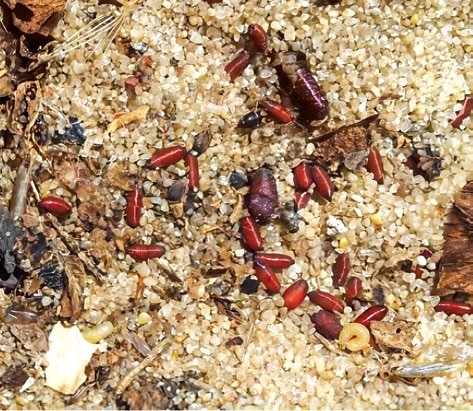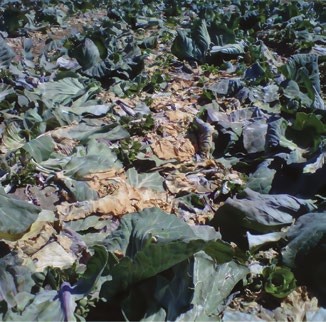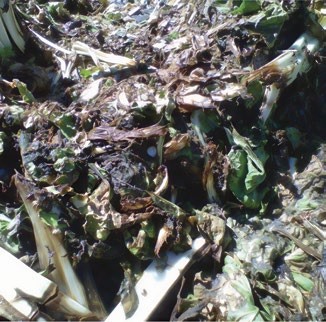stable fly
Small actions make a
BIG DIFFERENCE
Keep your community safe from stable flies
Stable flies are known for their painful bite to humans and animals — particularly pets, horses, and cattle. Please help protect your community from the painful bites of stable fly by reducing rotting plant waste in and on the soil.
Words Kim Haywood and Jacky Grayson, Project Officers, Invasive Species Environment Biosecurity, DPIRD
STABLE fly numbers are set to rise as the weather warms up, prompting an urgent call for help to horticulture growers, livestock owners and residents north and south of Perth to take action to minimise the impact of this declared pest.
The Stable Fly Management Plan 2019 was gazetted under the Biosecurity and Agriculture Management Act 2007 to provide guidance for commercial enterprises in the stable fly declared areas on how to effectively control stable fly. Under the Act landholders are responsible for controlling declared pests on their land and penalties of up to $20,000 could apply if controls are not implemented by landowners.
The stable fly problem has been escalating since the mid 1990s with the pest proving to be highly adaptable in almost any accumulation of decaying vegetable matter. The optimum larvae breeding environments have very high temperatures (55–60°C black sands, silage pits), a high degree of bacterial activity, ageing animal manures or combination of manure and vegetable matter. Therefore, managing larval habitats is the key to stable fly control.
Managing larval habitats is the key to stable fly control
The main stable fly breeding sources include vegetable crop residues left after harvesting, namely stumps i.e. from celery https:// vegetableswa.com.au/wp-content/ uploads/2025/09/larvae-in-celery. mp4, cauliflower and brocolli, stalks, leaves and fruit left on the ground and harvested crop waste such as damaged and rejected produce.
Samples collected from commercial vegetable growers have shown that over 1,000 stable flies/m2 can emerge from the soil of a trashed vegetable crop. Typically, one to several hundred stable flies develop from the rotting residue of broccoli, cabbage, cauliflower, celery, and lettuce crops. The sheer amount of vegetable matter on the ground represents a significant potential risk for stable fly breeding if it is left to rot for more than 3–4 days and/or is simply rotary hoed into the soil with minimal physical breakdown.
Solution
Breaking down vegetable crop residue into small pieces, will significantly reduce stable fly breeding and have the added benefit of allowing growers to put another crop in that area sooner which will reduce the risk of disease transmission to the next crop.
Reject produce must be either physically removed, put into an open pit, and buried weekly with at least 30 cm of soil; or sprayed weekly with a high-volume pesticide application.

Below: Pupae under reject cabbages.

Above: An adult stable fly (Stomoxys calcitrans) with prominent, biting mouthpart.
The vegetable crops that support stable fly development when residues of the crops are left to rot after harvest include beetroot, broccoli, cabbage, cauliflower, celery, Chinese radish, coriander, corn, leek, lettuce, silver beet, spring onions and squashes.
Many vegetable and fruit crops that are regularly harvested over an extended period of time (weeks to months) result in rejected and/or damaged produce being left on the ground either under the crop vines or in the space between crop rows. This is often the case with crops such as eggplants (aubergines), rockmelons, watermelons, snow peas, sugar snap peas, paprikas (bell peppers), capsicums, carrots, and zucchinis.
Produce either rejected within the vegetable/fruit crop or at first stage processing and/or sorting are all capable of supporting the development of biting flies and other nuisance flies if not handled properly.


The huge number of leaves and stalks and reject produce left after harvesting is complete in crop such as cabbage (left) and silver beet (right) provide a perfect breeding ground for biting flies.
MORE INFORMATION
• www.dpird.wa.gov.au/businesses/ pests-weeds-and-diseases/animal-pests-diseases/pest-insects/stable-fly
• www.dpird.wa.gov.au/siteassets/ documents/biosecurity/invasive/ pest-insects/stable-fly/stable-fly-management-faqs.pdf
• https://vegetableswa.com.au/wp-co-ntent/uploads/2025/09/larvae-incelery.mp4